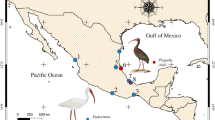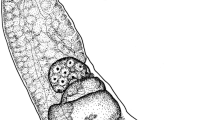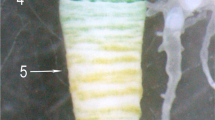Abstract
Based on chaetotaxy of the dorsal shield, the taxonomic status of many species of Ornithonyssus has been considered invalid, resulting in the synonymy of all Brazilian Ornithonyssus from small terrestrial wild mammals into one of the following four species: Ornithonyssus bacoti (Hirst, 1913), Ornithonyssus matogrosso (Fonseca, 1954), Ornithonyssus pereirai (Fonseca, 1935) or Ornithonyssus wernecki (Fonseca, 1935). Despite the revision of this genus in 1980, including all known species worldwide, the knowledge of Ornithonyssus in Brazil has not progressed for more than 40 years. Considering the potential importance of these haematophagous mites in transmitting rickettsial disease agents to animals and humans, we have revised Ornithonyssus species collected from small mammals in Brazil by means of morphological and molecular studies. Types and other material deposited in the Acari Collection of the Instituto Butantan (IBSP) were examined in addition to recently collected specimens. Morphological and genetic analysis of the 16S rDNA mitochondrial gene revealed that small terrestrial mammals in Brazil are parasitized by six species of Ornithonyssus mites: Ornithonyssus brasiliensis (Fonseca, 1939), O. matogrosso, O. monteiroi (Fonseca, 1941), O. pereirai, O. vitzthumi (Fonseca, 1941), and O. wernecki. An illustrated key to females of the valid Brazilian species of Ornithonyssus is included, based on optical and scanning electron microscopy.










Similar content being viewed by others
References
Bonvicino CR, Oliveira JA, D’Andrea PS (2008) Guia dos roedores do Brasil, com chaves para gêneros baseadas em caracteres externos. Rio de Janeiro. Centro Pan-Americano de Febre Aftosa—OPAS/OMS
Desloire S, Valiente-Moro C, Chauve C, Zenner L (2006) Comparision of four methods of extracting DNA from D. gallinae (Acari: Dermanyssidae). Vet Res 37:725–732
Dove W, Shelmire B (1931) Tropical rat mites, Liponyssus bacoti Hirst, vectors of endemic typhus. J Am Med Assoc 97:1506–1510
Evans GO, Till WM (1966) Studies on the British Dermanyssidae. Part II. Classification. Bull Br Mus (Nat Hist) Zool 14:107–370
Fonseca F (1935) Notas de Acarologia XIII. Novas espécies sul-americanas de parasitos do gênero Liponissus Kolenati, 1958 (Acarina: Liponissidae). Mem Inst Butantan 9:43
Fonseca F (1939) Notas de Acarologia XXVII. Liponissus brasiliensis sp. n., parasita habitual de roedores e acidental do homem. Mem Inst Butantan 12:1–8
Fonseca F (1941) Notas de Acarologia XXXII. Novas espécies brasileiras do gênero Liponissus Kolenati (Acari: Liponissidae). Mem Inst Butantan 15:103–118
Fonseca F (1943) Notas de Acarologia XXXIV. Posição do gênero Liponissus Kolenati em face das espécies tropicais; seu desdobramento em novos gêneros (Acari: Liponissidae). Mem Inst Butantan 16:149
Fonseca F (1948) A monograph of the genera and species of Macronyssidae Oudemans, 1936 (synom.: Liponyssidae Vitzthum, 1931) (Acari). Proc Zool Soc London 118:249–334
Fonseca F (1954) Notas de Acarologia XXXVI. Aquisições novas para a fauna brasileira de ácaros hematófagos (Acari: Macronyssidae). Mem Inst Butantan 1:79–92
Fonseca F (1960) Enquête Acarologique Au Pérou. Acarologia Tome II(I):1–34
Furman DP (1971) Observations on some laelapid and macronyssid mites in the Fonseca collection (Acari: Mesostigmata). Papeis Avulsos de Zoologia 25:69–88
Furman DP, Radovsky F (1963) A new species of Ornithonyssus from the white-tailed antelope squirrel, with a rediagnosis of the genus Ornithonyssus. Pan Pacific Entomol 39:89–98
Hirst S (1913) On three new species of gamasid mites found on rats. Bull Entomol Res 4:119–124
Hirst S (1914) On the parasitic Acari found on the species of rodents frequenting human habitations in Egypt. Bull Entomol Res 5:215–219
Liu WT (1947) Isolation of typhus rickettsiae from rat mites, Liponyssus bacoti, in Peiping. Am J Hyg 45:58–66
Mangold AJ, Bargues MD, Mas-Coma S (1998) Mitochondrial 16S rDNA sequences and phylogenetic relationships of species of Rhipicephalus and other tick genera among Metastriata (Acari: Ixodidae). Parasitol Res 84:478–484
Micherdzinski W (1980) Eine Taxonomische Analyse Der Familie Macronyssidae Oudemans, 1936. I. Subfamilie Ornithonyssinae Lange, 1958 (Acarina, Mesostigmata). Polska Akademia Nauk 1:1–264
Nicholas KB, Nicholas HBJ, Deerfield DW (1997) GeneDoc: analysis and visualization of genetic variation. EMBNEW News 4:14
Philip CB, Hughes LE (1948) The tropical rat mite, Liponyssus bacoti, as an experimental vector of rickettsialpox. Am J Trop Med 28:697–705
Radovsky FJ (1966) Revision of the macronyssid and laelapid mites of bats: outline of classification with description of new genera and new type species. J Med Entomol 3:93–99
Radovsky FJ (1967) The Macronyssidae and Laelapidae (Acari: Mesostigmata) parasitic on bats. University of California Publications in Entomology, p 288
Reeves WK, Loftis AD, Szumlas DE, Abbassy MM, Helmy IM, Hanafi HA, Dasch GA (2007) Rickettsial pathogens in the tropical rat mite Ornithonyssus bacoti (Acari: Macronyssidae) from Egyptian rats (Rattus spp.). Exp Appl Acarol 41(1–2):101–107
Strandtmann RW, Wharton GW (1958) Manual of Mesostigmatid mites parasitic on vetebrates. The Institute of Acarology, University of Maryland, College Park, USA, p 330
Swofford DL, Olsen GJ, Wandell PJ, Hillis DM (1998) PAUP*. Phylogenetic analysis using parsimony (* and other methods). Version 4. Sinauer Associates, Sunderland, Machachusetts
Wilson DE, Reeder DM (2005) Mammal species of the world: a taxonomic and geographic reference, 3rd edn. John Hopkins University Press, Baltimore
Acknowledgments
We thank Fernando C. Jacinavicius who kindly compiled data from the IBSP collections for preparing the maps. This study was supported by Fundação de Amparo à Pesquisa do Estado de São Paulo—FAPESP (grant number 2007/57749-2 to DMBB) and by Conselho Nacional de Desenvolvimento Científico e Tecnológico—CNPq (grant number 478950/2004-7 to DMBB); academic CNPq career scholarship to DMBB and MBL, and CNPq PhD scholarship to FANB.
Author information
Authors and Affiliations
Corresponding author
Rights and permissions
About this article
Cite this article
Nieri-Bastos, F.A., Labruna, M.B., Marcili, A. et al. Morphological and molecular analysis of Ornithonyssus spp. (Acari: Macronyssidae) from small terrestrial mammals in Brazil. Exp Appl Acarol 55, 305–327 (2011). https://doi.org/10.1007/s10493-011-9475-z
Received:
Accepted:
Published:
Issue Date:
DOI: https://doi.org/10.1007/s10493-011-9475-z




